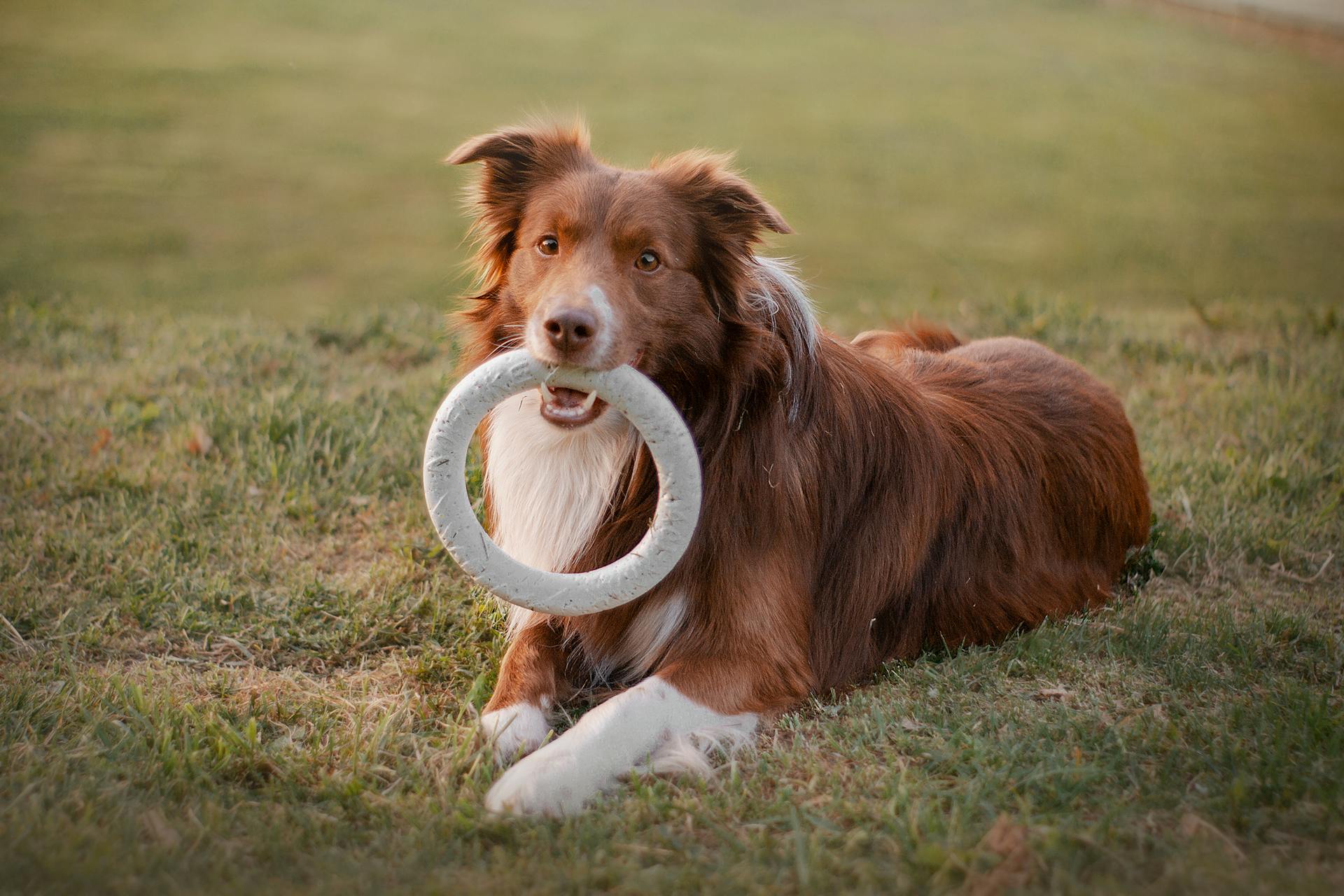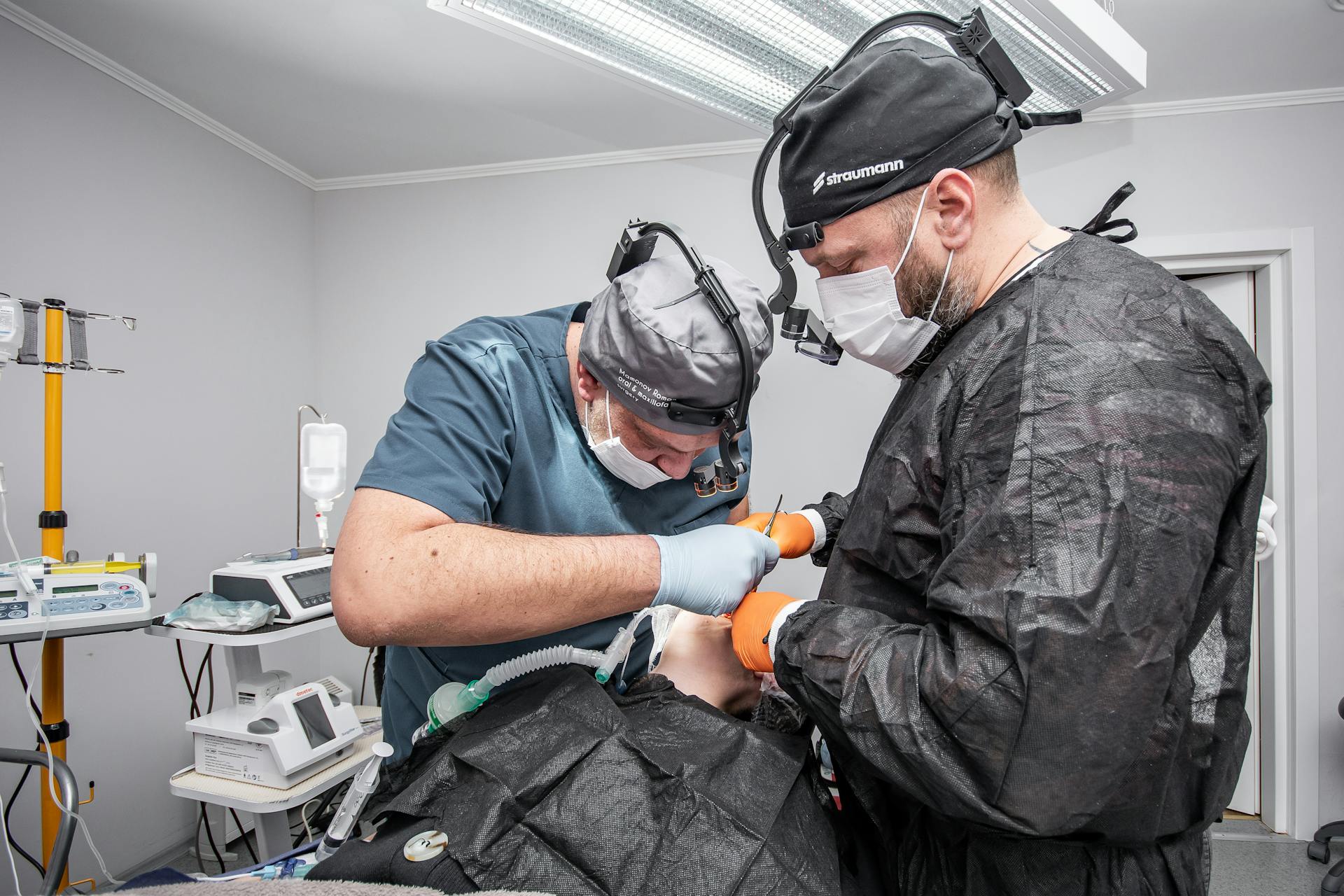
Exercise-induced collapse is a serious condition that affects some breeds more than others. Certain breeds are at higher risk due to their genetic predisposition, such as the Doberman Pinscher, German Shorthaired Pointer, and Labrador Retriever.
These breeds are prone to exercise-induced collapse due to their unique physiology. Their bodies are designed for high-intensity exercise, but this can sometimes lead to a sudden and severe collapse.
The exact cause of exercise-induced collapse is still not fully understood, but it's thought to be related to a combination of factors, including genetics, body temperature, and physical exertion.
Testing and Diagnosis
Testing and diagnosis of exercise-induced collapse (EIC) in dogs involves several steps. DNA testing can confirm whether a dog has EIC, and it's essential for breeders to test their dogs before breeding to avoid producing affected puppies.
DNA testing can identify three types of EIC status: affected (two copies of the mutation), carrier (one copy of the mutation), and clear (no copies of the mutation). If a dog is affected, it means they have two copies of the mutation and will always pass one copy to their offspring.
If a dog is bred to another affected dog, all offspring will be affected. If a carrier dog is bred to an affected dog, 50% of offspring will be affected and 50% will be carriers. If a carrier dog is bred to a clear dog, all offspring will be carriers.
The EIC mutation is common in Labrador Retrievers, with 5-15% of the breed affected and 35-40% being carriers. In Chesapeake Bay Retrievers, 2-3% are affected and 15-20% are carriers. In Curly Coated Retrievers, 15-20% are affected and 30-35% are carriers.
Genetic testing can now be easily performed to confirm a suspected diagnosis of EIC. A veterinarian can collect a DNA sample from your dog, usually from a buccal swab or a blood sample. The sample is then sent to a laboratory for analysis.
Here are the possible EIC test results and what they mean:
- Affected (E/E): The dog has two copies of the mutation and will always pass one copy to their offspring.
- Carrier (E/N): The dog has one copy of the mutation and can pass it to their offspring.
- Clear (N/N): The dog does not have the mutation and cannot pass it to their offspring.
If your dog is diagnosed with EIC, it's essential to work with a veterinarian to develop a plan to manage the condition and prevent future episodes of collapse. With proper care and management, many dogs with EIC can live happy and healthy lives.
Affected Breeds
A dog with the mutated EIC gene, which causes Exercise-induced Collapse, can be found in various breeds. The fee for testing a dog for the EIC gene is $65.00.
If a dog has two copies of the mutated EIC gene, it will pass on the mutated gene to all its offspring. This means that if you breed an affected dog to a clear dog, you'll have a litter of 100% carrier offspring.
The EIC gene is not the only cause of collapse in dogs, as seen in Border Collie Collapse (BCC), a different condition that affects herding breeds.
Other Breeds
Labradors are not the only retriever breed affected by the DNM1 genetic mutation that causes Exercise-Induced Collapse (EIC). The mutation has also been found in curly coated retrievers, with 40% of them being carriers and 18% affected.
Chesapeake Bay retrievers are another breed that carries the mutation, with 17% of them being carriers and 3% affected.
For your interest: How Much Exercise Do Labrador Retrievers Need

Other breeds that have been tested for the mutation include Boykin spaniels, which have a carrier rate of 33% and an affected rate of 7%.
Old English sheepdogs also carry the mutation, with 30% of them being carriers and 3% affected.
In addition to these breeds, the mutation has also been identified in German wirehaired pointers, Bouvier des Flanders, Pembroke Welsh corgis, and cocker spaniels, although it's less common in these breeds.
Border Collie
The Border Collie is a herding breed that's prone to a condition called Border Collie Collapse (BCC).
BCC is a different collapse condition not caused by the dynamin-1 EIC mutation, which is being investigated in several herding breeds.
It's worth noting that the exact causes of BCC are still being researched and investigated, but it's clear that it's a serious issue affecting many Border Collies.
For another approach, see: Eye Problems in Border Collies
Symptoms and Clinical Signs
Exercise-induced collapse can cause a variety of symptoms in affected dogs, which include:
- Wide stance
- Muscle weakness, especially in the hind legs
- Dragging hind legs
- Lack of coordination, stumbling
- Sudden collapse during exercise
- Inability to move after exercise
- Increased heart rate
- Rapid breathing
- Increased temperature (fever)
- Seizures (rare)
During an episode of exercise-induced collapse, dogs may exhibit a wide-based, long, loose stride rather than the short, stiff strides typically associated with muscle weakness. Their rear limbs may become weak and unable to support weight, and they may continue to run while dragging their back legs.
In most cases, dogs recover from exercise-induced collapse quickly and are normal within 5 to 25 minutes with no residual pain, weakness, or stiffness.
Clinical Signs

Exercise-induced collapse in dogs can manifest in various ways, and it's essential to recognize the warning signs to prevent severe consequences.
Dogs with exercise-induced collapse often exhibit a wide stance, which is a subtle indication that something is amiss.
During an episode, affected dogs typically display muscle weakness, particularly in the hind legs, and may drag their hind legs while still trying to run.
A lack of coordination and stumbling are common symptoms, and it's not uncommon for dogs to suddenly collapse during exercise.
In some cases, dogs may be unable to move after exercise, which is a clear indication that they need to rest and recover.
Other signs to watch out for include an increased heart rate, rapid breathing, and a higher than normal body temperature.
Seizures are a rare but possible symptom, and it's crucial to seek veterinary attention if you notice any of these signs.
Here's a summary of the common symptoms:
- Wide stance
- Muscle weakness, especially in the hind legs
- Dragging hind legs
- Lack of coordination, stumbling
- Sudden collapse during exercise
- Inability to move after exercise
- Increased heart rate
- Rapid breathing
- Increased temperature (fever)
- Seizures (rare)
Type of Exercise

Routine exercise like jogging, hiking, swimming, and agility or fly ball training may not induce an episode in dogs with EIC.
Most dogs with EIC can participate in low-intensity activities without incident. However, high-intensity exercise with continuous activity is more likely to cause a problem.
Activities that commonly cause collapse in dogs with EIC include grouse or pheasant hunting, repetitive "happy retrieves", and retrieving drills. These activities often involve a high level of excitement or anxiety.
Dogs with EIC may also be triggered by repetitive correction or anticipation of electric collar correction during training. This can lead to a high-stress environment that exacerbates the condition.
Here's an interesting read: Can Prong Collars Cause Tracheal Collapse
Risk Factors and Prevention
Hot weather can increase the likelihood of collapse in dogs with EIC, but it's not the only factor. Dogs are less likely to collapse in cold weather or while swimming.
Dogs with EIC are more likely to collapse when engaging in activities that excite or stress them, such as retrieving or chasing live birds. This is because their intense personalities and high levels of excitement play a significant role in inducing collapse.
Routine exercise like jogging or hiking is unlikely to induce an episode in dogs with EIC, but activities with continuous intense exercise are more likely to cause collapse. This can include activities like pheasant hunting or repetitive "happy retrieves".
Body temperature is not the underlying problem in dogs with EIC, but it can play a role in collapse. In dogs with EIC, body temperature is dramatically increased during collapse, often above 41.5 C (107.6F), and they will pant hard to cool off.
To prevent EIC, breeders should not breed carriers of the mutated gene. For dogs who have the condition, limiting triggers and avoiding strenuous exercising can prevent symptoms.
Frequently Asked Questions
How common is EIC in labs?
According to genetic testing, approximately 39% of Labrador Retrievers are carriers of the EIC mutation, while 7% are at-risk or affected. Understanding the prevalence of EIC in Labs is crucial for responsible breeding and pet ownership.
Sources
- https://vmc.usask.ca/services/medicine-eic.php
- https://labgenvet.ca/en/exercise-induced-collapse-eic/
- http://graveslabradors.com/genetic-test-for-exercise-induced-collapse-eic/
- https://www.petmd.com/dog/conditions/genetic/exercise-induced-collapse-dogs
- https://vetmed.umn.edu/research/research-labs/canine-genetics-lab/canine-genetics-testing/dynamin-1-associated-exercise
Featured Images: pexels.com


